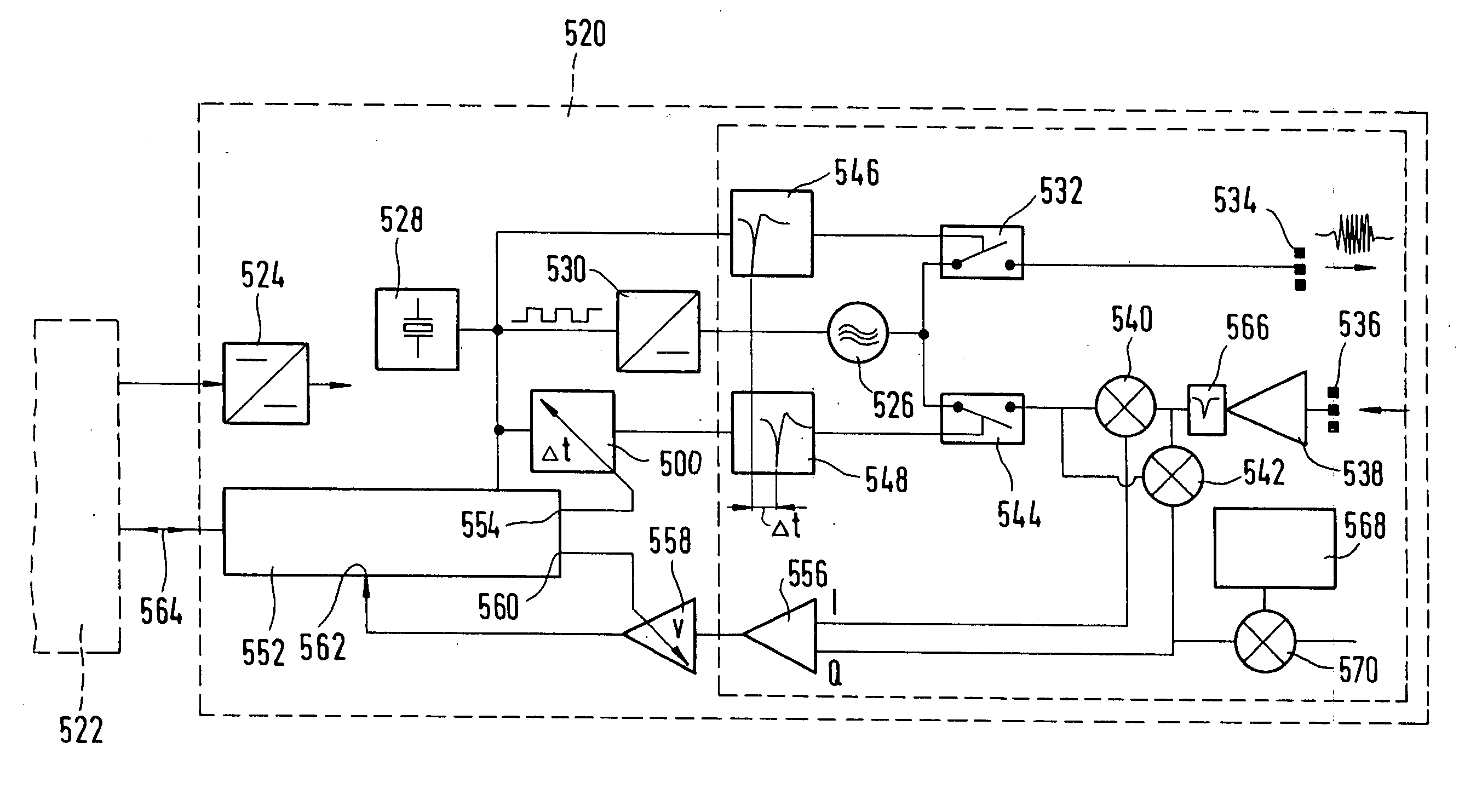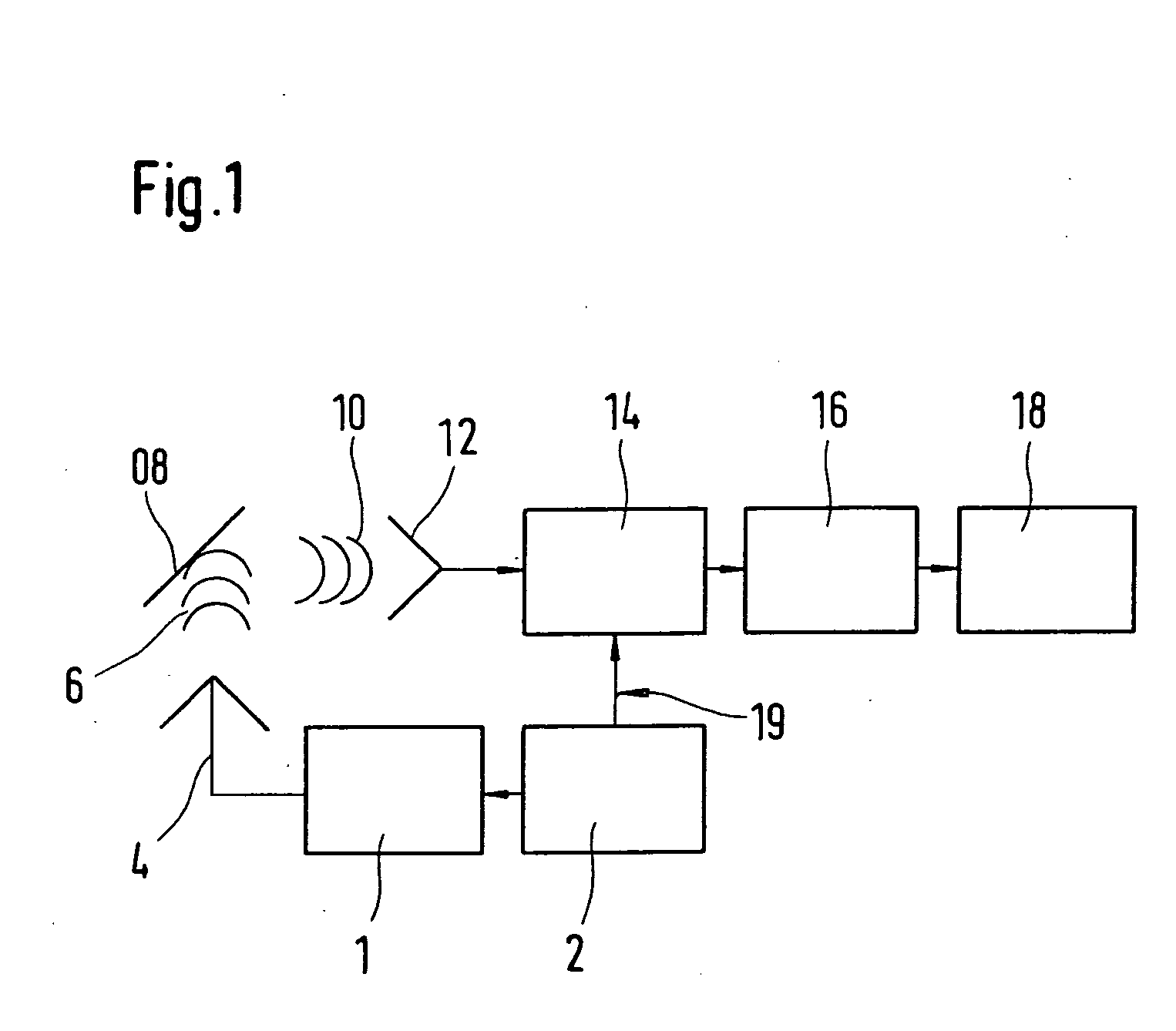Method and device for the adaptive regulation of power
a technology of adaptive regulation and power, applied in the direction of measurement devices, using reradiation, instruments, etc., can solve the problems of unacceptably high signal level, additional measurements, parking lots at sports facilities or shopping centers, etc., to reduce power, reduce signal irregularities in radar detectors, and reduce measurement repetition rate
- Summary
- Abstract
- Description
- Claims
- Application Information
AI Technical Summary
Benefits of technology
Problems solved by technology
Method used
Image
Examples
Embodiment Construction
[0013] In a block diagram, FIG. 1 shows a radar device having a correlation receiver as known in the art. A pulse generator 2 induces a transmitting device 1 to emit a transmitted signal 6 via an antenna 4. Transmitted signal 6 impinges on a target object 8, where it is at least partially reflected, and returns to receiver 14. Received signal 10 is received by antenna 12. In this context, antenna 12 and antenna 4 may be identical and be switched between transmitting and receiving operation. Upon receipt of received signal 10 by antenna 12, received signal 10 is routed to receiver 14 and subsequently fed via a filter device having A / D conversion 16 to an evaluation device 18. An exceptional feature of such a radar device, which has a correlation receiver, is that receiver 14 receives a reference signal 20 from pulse generator 2. Received signals 10 received by receiver 14 are mixed in receiver 14 with reference signal 20. The correlation operation makes it possible to infer the dista...
PUM
 Login to View More
Login to View More Abstract
Description
Claims
Application Information
 Login to View More
Login to View More - R&D
- Intellectual Property
- Life Sciences
- Materials
- Tech Scout
- Unparalleled Data Quality
- Higher Quality Content
- 60% Fewer Hallucinations
Browse by: Latest US Patents, China's latest patents, Technical Efficacy Thesaurus, Application Domain, Technology Topic, Popular Technical Reports.
© 2025 PatSnap. All rights reserved.Legal|Privacy policy|Modern Slavery Act Transparency Statement|Sitemap|About US| Contact US: help@patsnap.com



